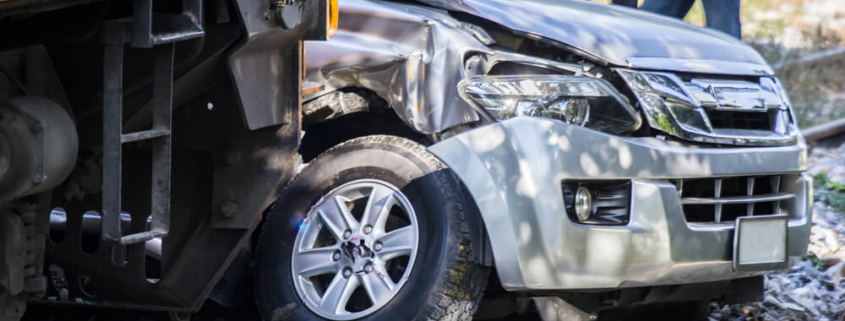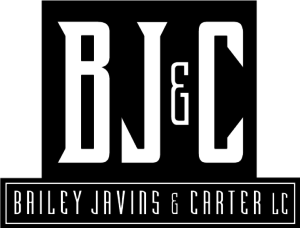Accidents and Railroad Crossings
There are more than 250,000 railroad crossings in the United States that intersect with vehicle traffic, and over 8,000 crossings in West Virginia alone. Historically, railroads have played a critical role in the growth and development of the Mountain State, and trains are still widely used to transport coal and other natural resources and goods to other parts of the country. Although trains are an important part of our state’s economy, they also pose a risk of accidents at railroad crossings.
According to the Federal Railroad Administration, collisions at railroad crossings rose by 3.1% in the U.S. from 2016 to 2017. There was also a 7.4% increase in crossing collision fatalities during this period. Railroad crossing accidents are especially hazardous because of the sheer force of colliding with an oncoming train. When a motor vehicle is struck by a train that weighs anywhere between 80,000 and 400,000 pounds, it is very difficult to walk away without life-altering or fatal injuries, no matter how well-built and protected your vehicle is. It comes as very little surprise, then, that individuals who collide with trains are approximately 30 times more likely to be killed than those involved in collisions with other motor vehicles.
One of the major reasons for train accidents is that so many crossings lack the proper warning mechanisms. Nationally, approximately 46% of railroad crossings do not have flashing lights or crossing gates to protect motorists when there is an oncoming train. Although unprotected or “passive” crossings make up a little under half of the crossings in the United States, approximately 60% of all railroad crossing fatalities occur at a passive crossing.
The sharp rise recently in railroad crossing accidents and fatalities has prompted the Federal Railroad Administration (FRA) and National Highway Transportation Safety Administration (NHTSA) to re-launch their “Stop. Trains Can’t” education initiative. In addition to educating the public regarding the dangers of colliding with an oncoming train at a railroad crossing, the FRA is also investing over $65 million into a wide range of grant projects designed to improve railroad safety, efficiency, and reliability. Installing warning mechanisms at passive crossings is included among the improvement projects the FRA is awarding grants for.
Accidents and Railroad Crossings in West Virginia
Because of the unique topography here in West Virginia motorists, bicyclists, and pedestrians here face a greater risk of colliding with a train. This state has countless narrow, winding roads that cut through the numerous hilly and mountainous regions. If there is a lack of proper warning mechanisms, overgrowth of vegetation, and other factors that prevent a motorist from detecting a railroad crossing until they are practically right on top of the tracks, the dangers become even more escalated.
Who is Responsible for Railroad Crossing Accidents?
When a train accident occurs, there are several parties they may be potentially liable:
- The Driver, Bicyclist, or Pedestrian: Some individuals make very poor decisions when they are near railroad crossings. Motorists, bicyclists, and pedestrians need to exercise extreme caution around crossings. Listen carefully for trains and watch for warning mechanisms, and NEVER try to race an ongoing train.
- The Company Operating the Train: The driver has a responsibility to operate the train in a safe manner. Unfortunately, some train operators are improperly trained, causing them to break acceptable speed limits and increase the chances of a deadly collision.
- The Railroad Track Owner: The company that owns the railroad track may or may not be the same company that owns and operates the train. The track owner is responsible for maintaining the tracks to minimize the chances of a derailment, keep the vegetation in and around railroad crossings trimmed so motorists can see oncoming trains, and take other measures to ensure the public’s safety.
- The Train Designer and/or Manufacturer: If the railroad crossing accident was due to a malfunction of an electrical or mechanical system, the designer and/or manufacturer of the train may be the responsible party. Examples of electrical or mechanical defects include failure of warning whistles, failure of warning lights, failure of the train’s braking system, and many others.
- The Local Municipality: Some train accidents are caused by failure to properly maintain the roadway that intersects with the railroad crossing. When this occurs, the city, county, or other entity that is responsible for maintaining the roads could be held liable.
Injured in a Railroad Crossing Accident? Speak with an Experienced West Virginia Personal Injury Lawyer
Because of the various parties that could be held responsible and the numerous laws and regulations governing the railroad industry, train accident cases tend to be very complex and difficult to pursue. If you or a loved one was injured or killed at a railroad crossing, it is important to work with an attorney who thoroughly understands these types of cases and has a successful track record obtaining full and fair compensation for injury victims.
At Bailey, Javins, and Carter L.C., we have successfully represented countless clients over the years who have been injured in accidents at railroad crossings. We have extensive knowledge of this area of the law, and we work closely with our clients to provide the strong personalized representation they need and deserve. For a free consultation with one of our experienced attorneys, contact our office today at (800) 497-0234 or (800) 296-6979, or send us a message through our online contact form.




